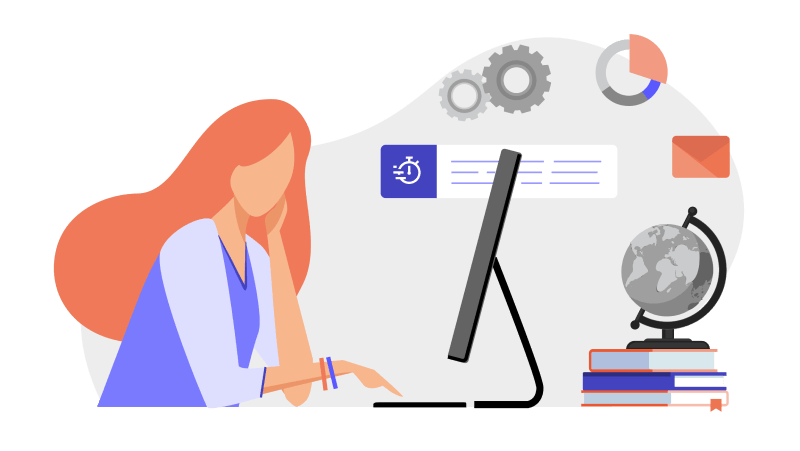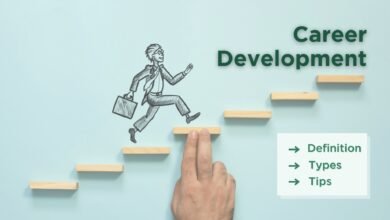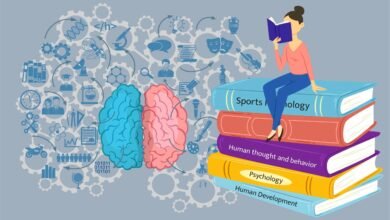The Art of Career Navigation: A Creative Approach to Progress

In the modern professional landscape, navigating one’s career path requires more than just traditional strategies and linear thinking. It demands a creative approach that embraces innovation, flexibility, and self-discovery. The art of career navigation involves exploring various opportunities, adapting to change, and leveraging creativity to achieve success.
Navigating one’s career involves charting a course through the complexities of the professional world. It entails setting goals, making decisions, and continuously adapting to new challenges and opportunities. At its core, career navigation is about finding fulfillment and success in one’s professional journey.
Understanding Career Goals
Identifying Personal Interests and Passions
At the heart of effective career navigation lies a deep understanding of oneself. It’s essential to identify passions, interests, and strengths to align them with career goals effectively.
Setting Short-term and Long-term Career Goals
Setting clear and achievable goals is crucial for guiding career progression. Short-term goals provide immediate direction, while long-term goals offer a vision for the future.
Exploring Opportunities
Researching Various Career Paths
The modern job market offers a myriad of opportunities across industries and sectors. Researching different career paths allows individuals to explore their options and make informed decisions.
Networking and Building Professional Relationships
Networking plays a vital role in career advancement. Building meaningful connections with professionals in your field can lead to valuable opportunities and mentorship.
Embracing Change and Adaptability
Being Open to New Experiences and Challenges
In a rapidly evolving world, adaptability is key to staying relevant and resilient. Embracing change opens doors to new opportunities and experiences.
Learning from Setbacks and Failures
Setbacks are inevitable in any career journey. However, viewing them as learning experiences rather than obstacles can fuel personal and professional growth.
Leveraging Creativity in Decision-Making
Leveraging creativity in decision-making involves harnessing imaginative thinking and innovative approaches to address challenges and make informed choices. It’s about going beyond conventional methods and exploring alternative solutions that may not be immediately apparent.
In practical terms, leveraging creativity in decision-making means:
Brainstorming: Encouraging free-flowing ideas and solutions without judgment or limitation. This allows for the exploration of a wide range of possibilities.
Exploring Multiple Perspectives: Considering various viewpoints and angles to gain a comprehensive understanding of the situation. This involves stepping into the shoes of others and empathizing with different stakeholders.
Embracing Risk: Being willing to take calculated risks and venture into uncharted territory. Creativity often thrives in environments where failure is viewed as a stepping stone to learning and growth.
Thinking Outside the Box: Challenging assumptions and breaking away from conventional thinking patterns. This involves questioning norms and exploring unconventional avenues to arrive at innovative solutions.
Encouraging Collaboration: Recognizing that creativity flourishes in collaborative settings where diverse ideas and expertise intersect. Working with teams allows for the pooling of talents and the generation of novel approaches.
Experimentation: Adopting a mindset of continuous experimentation and iteration. This involves testing hypotheses, gathering feedback, and refining ideas based on real-world results.
Adopting a Growth Mindset: Embracing the belief that skills and abilities can be developed through dedication and effort. This mindset fosters resilience and a willingness to embrace challenges as opportunities for growth.
By leveraging creativity in decision-making, individuals and organizations can unlock new possibilities, solve complex problems, and adapt to changing circumstances with agility and innovation.
Thinking Outside the Box
Creative thinking allows individuals to approach problems from new perspectives and find innovative solutions.
Using Creative Problem-solving Techniques
Incorporating creativity into decision-making processes empowers individuals to tackle challenges with ingenuity and resourcefulness.
Continuous Learning and Development

Continuous learning and development are integral components of personal and professional growth, encompassing a commitment to ongoing education, skill enhancement, and self-improvement. It involves cultivating a mindset of curiosity and a willingness to embrace new knowledge and experiences throughout one’s life and career journey.
Here’s how continuous learning and development can be expanded upon:
Embracing Lifelong Learning: Recognizing that learning is a lifelong process that extends beyond formal education. It involves actively seeking out opportunities to acquire new skills, knowledge, and perspectives.
Staying Current in Your Field: Remaining abreast of industry trends, best practices, and emerging technologies relevant to your profession. This ensures that you stay competitive and adaptable in a rapidly evolving landscape.
Exploring Diverse Learning Modalities: Embracing a variety of learning approaches, including online courses, workshops, seminars, conferences, books, podcasts, and mentorship programs. Each modality offers unique insights and experiences that contribute to holistic development.
Setting Learning Goals: Establishing clear objectives and milestones for personal and professional development. This helps to maintain focus and motivation while tracking progress over time.
Seeking Feedback and Reflection: Soliciting constructive feedback from peers, mentors, and supervisors to identify areas for improvement and growth. Engaging in self-reflection allows for introspection and refinement of skills and behaviors.
Fostering a Culture of Learning: Creating an environment that values and supports continuous learning within organizations and teams. This includes providing resources, opportunities for skill development, and recognition of achievements.
Adapting to Change: Embracing change as an opportunity for learning and adaptation. Remaining flexible and open-minded in the face of new challenges fosters resilience and promotes growth.
Investing in Personal Development: Allocating time, resources, and energy towards personal development initiatives that align with your goals and aspirations. This may involve attending workshops, pursuing certifications, or engaging in self-directed learning projects.
Encouraging Peer Learning and Collaboration: Leveraging the collective expertise and experiences of peers and colleagues through collaborative learning initiatives. Peer-to-peer mentorship and knowledge sharing can accelerate learning and foster a culture of innovation within teams.
Celebrating Milestones and Achievements: Recognizing and celebrating milestones and achievements along the learning journey. This reinforces motivation and reinforces the importance of continuous improvement and development.
Pursuing Education and Skill Enhancement
In a dynamic job market, continuous learning is essential for staying competitive. Investing in education and skill development opens doors to new opportunities and career growth.
Seeking Feedback and Mentorship
Feedback and mentorship provide valuable insights and guidance for personal and professional development. Seeking input from experienced professionals can help navigate career decisions effectively.
Balancing Ambition and Realism
Setting Realistic Expectations
While ambition drives growth and achievement, it’s essential to set realistic expectations and milestones along the way.
Striving for Growth While Maintaining Balance
Achieving success in one’s career requires a delicate balance between ambition and personal well-being. Prioritizing self-care and maintaining a healthy work-life balance are crucial for long-term satisfaction and fulfillment.
Conclusion (Art of Career Navigation)
In conclusion, the art of career navigation is a dynamic and multifaceted process that requires creativity, adaptability, and self-awareness. By embracing a creative approach to progress, individuals can navigate their professional journeys with confidence and purpose, ultimately achieving success and fulfillment.
Read More: Best 5 Essentials Elements of Purposeful Leadership
FAQs
How can creativity enhance career navigation?
Creativity allows individuals to approach challenges and opportunities from unique perspectives, leading to innovative solutions and career advancement.
Is it important to stick to a single career path?
While consistency can be beneficial, it’s also essential to remain open to new opportunities and pivot when necessary to align with evolving goals and interests.
How do setbacks contribute to career growth?
Setbacks offer valuable learning experiences, fostering resilience, adaptability, and personal development crucial for long-term career success.
Can career goals change over time?
Absolutely. As individuals evolve and their priorities shift, career goals may also change to reflect new aspirations, interests, and opportunities.
What role does adaptability play in career success?
Adaptability enables individuals to navigate change, seize opportunities, and overcome challenges effectively, ultimately contributing to long-term career success.
Read More: 10 Best Navigating the Career Labyrinth: A Guide to Personal Growth












One Comment